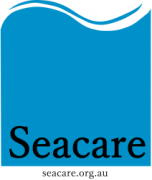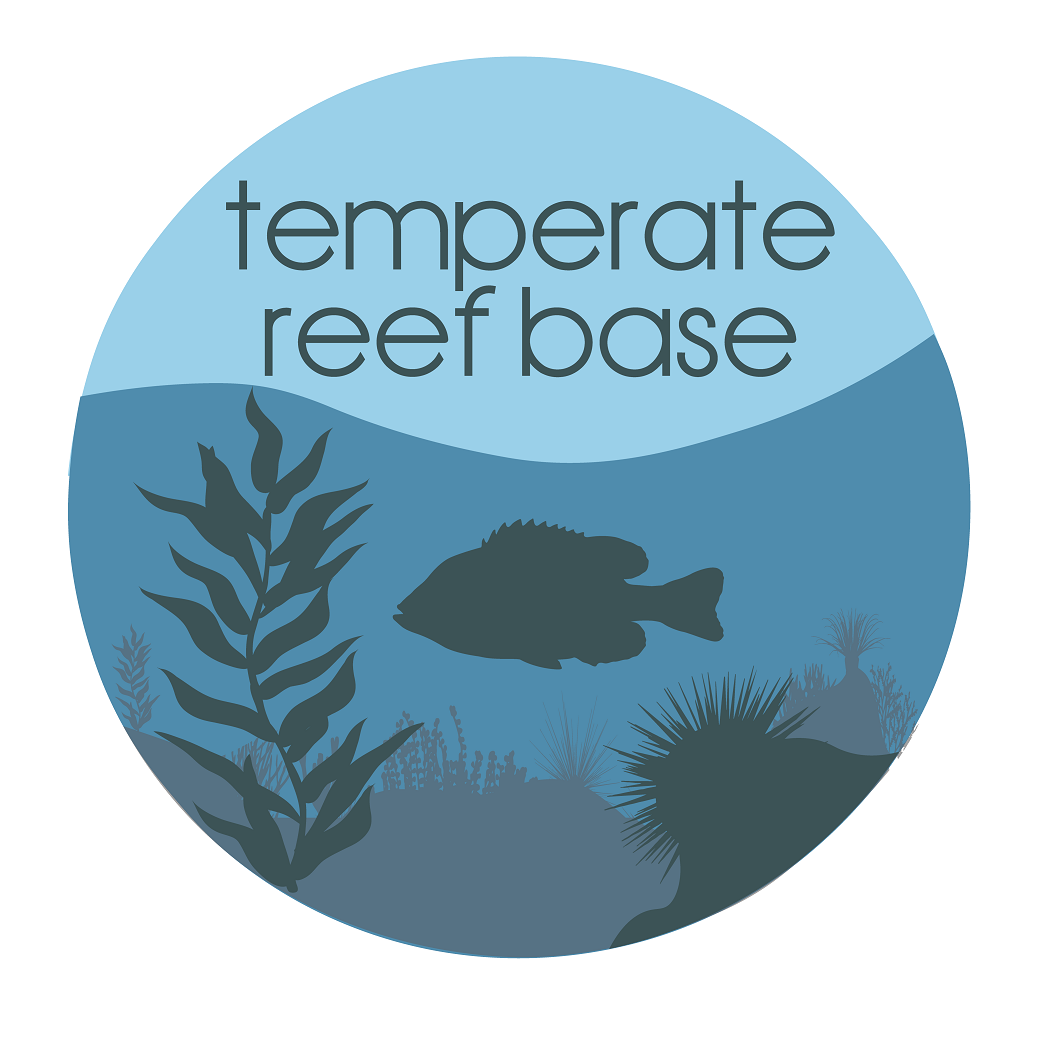Temperate Reef
Type of resources
Topics
Keywords
Contact for the resource
Provided by
Years
-

[This data has been superseded by a synthesised global dataset which includes additional ecological data contributed by non-RLS entities (National Reef Monitoring Network). Please visit the corresponding NRMN Collection (IMOS - National Reef Monitoring Network Sub-Facility - Survey metadata) for the most current version of this data. See "Downloads and Links" section below.] This dataset shows the location of Reef Life Survey (RLS) sites surveyed by divers along 50m transects on shallow rocky and coral reefs, worldwide. Although surveys are undertaken as part of monitoring programs at particular locations (mostly in Australia), this dataset contains only spatial information, with repeat surveys of sites not included. Biological data (abundance of invertebrates and fish, habitat quadrats) collected from these surveys is available as separate datasets through the AODN Data Portal (https://portal.aodn.org.au/ - search for 'NRMN')
-
Kelps are in global decline due to climate change, including ocean warming. To identify vulnerable species, we need to identify their tolerances to increasing temperatures and whether tolerances are altered by co-occurring drivers such as inorganic nutrient levels. This is particularly important for those with restricted distributions, which may already be experiencing thermal stress. To identify thermal tolerance of the range restricted kelp Lessonia corrugata, we conducted a laboratory experiment on juvenile sporophytes to measure performance (growth, photosynthesis) across its thermal range (4 – 22 °C). We found the upper thermal limit for growth and photosynthesis to be ~ 22 – 23 °C, with an optimum of ~ 16 °C. To determine if elevated inorganic nitrogen availability could enhance thermal tolerance, we compared performance of juveniles under low (4.5 µmol/day) and high (90 µmol/day) nitrate conditions at and above the thermal optimum (16 – 23.5 °C). Nitrate enrichment did not enhance thermal performance at temperatures above the optimum but did lead to elevated growth rates at the thermal optimum 16 °C. Our findings indicate L. corrugata is likely to be extremely susceptible to moderate ocean warming and marine heatwaves. Peak sea surface temperatures during summer in eastern and northeastern Tasmania can reach up to 20 – 21 °C and climate projections suggest that L. corrugata’s thermal limit will be regularly exceeded by 2050 as south-eastern Australia is a global ocean-warming hotspot. By identifying the upper thermal limit of L. corrugata we have taken a critical step in predicting the future of the species in a warming climate.
-
Temperature loggers have been deployed at a range of sites statewide in waters ranging between 6 and 22m depth. From 2012, 27 sites around Tasmania are being monitored. This record shows data collected from 2004 up to December 2020. Data is still being collected (April 2023) and will be added to this collection as it becomes available.
-
Out-of-range observations of significant rafts of giant kelp (Macrocystis pyrifera) washing ashore in southern NSW in winter 2020. On 9 August 2020, two local marine naturalists on the south coast of New South Wales, Australia noticed a significant amount of a large unfamiliar kelp washed up on a local beach. Following some quick confirmations via phone and email, it was revealed that the unfamiliar seaweed was giant kelp (Macrocystis pyrifera): a species whose closest known populations are ~450 km away to the south (in Tasmania and western Victoria) and whose transport to New South Wales would have required oceanic rafting over several weeks and hundreds of kilometres against the prevailing south-flowing East Australian Current. Subsequent community-led searches over the following days confirmed four more locations of often-substantial amounts of giant kelp wrack, as well as many more anecdotal and unconfirmed accounts.
-
Mesozooplankton community composition and structure were examined throughout the D’Entrecasteaux Channel, Huon Estuary and North West Bay, Tasmania, from November 2004 to October 2005, the data represented by this record was collected on the 10/03/2005. The composition of the mesozooplankton community was typical of inshore, temperate marine habitats, with seasonally higher abundance in summer and autumn and lower numbers in winter and spring. Copepods were the largest contributors to total abundance across all seasons and stations, while cladocerans and appendicularians were proportionally abundant in spring and summer. The faecal pellets of these three main groups, along with those of krill and amphipods, also contributed significantly to material recovered from sediment traps. Meroplanktonic larvae of benthic animals showed short-term peaks in abundance and were often absent from the water column for long periods. Spatially, North West Bay and the Channel had a higher representation of typically marine species, including Calanus australis and Labidocera cervi, while truly estuarine species, such as the copepod Gladioferens pectinatus, were more important in the Huon Estuary.
-
Mesozooplankton community composition and structure were examined throughout the D’Entrecasteaux Channel, Huon Estuary and North West Bay, Tasmania, from November 2004 to October 2005, the data represented by this record was collected on the 06/09/2005. The composition of the mesozooplankton community was typical of inshore, temperate marine habitats, with seasonally higher abundance in summer and autumn and lower numbers in winter and spring. Copepods were the largest contributors to total abundance across all seasons and stations, while cladocerans and appendicularians were proportionally abundant in spring and summer. The faecal pellets of these three main groups, along with those of krill and amphipods, also contributed significantly to material recovered from sediment traps. Meroplanktonic larvae of benthic animals showed short-term peaks in abundance and were often absent from the water column for long periods. Spatially, North West Bay and the Channel had a higher representation of typically marine species, including Calanus australis and Labidocera cervi, while truly estuarine species, such as the copepod Gladioferens pectinatus, were more important in the Huon Estuary.
-
Rocky reefs form an important habitat on the continental shelf and one subject to disproportionate fishing pressure given the high productivity of this habitat relative to adjacent sandy seabed. Despite this, little is known of the extent and nature of these systems beyond their value to the fishing industry. This project collated all known mapping data from government and industry (including data acquired during CERF and NERP Hubs) to provide an updated map of this key habitat around Australia. A geomorphological classification system is also being developed for these reefs, and associated cross-shelf habitats with the aim of it being accepted and adopted nationally, and it is being tested and refined for biological applicability. This record describes the national habitat map data product generated from multiple datasets collated as part of NESP MBH Project D3. The individual habitat mapping datasets collected as part of the data collation process have also been published and are linked to this record.
-

An aerial survey was conducted for giant kelp (Macrocystis pyrifera) on the east coast of Tasmania from Eddystone Point to Southeast Cape. This survey represents part of a series of similar surveys, with historic aerial surveys having been conducted in 1986 and 1999. The survey was conducted via light aircraft. Areas of visable Macrocystis pyrifera beds were marked on topographical land tenure maps using landmarks as references, and complimentary photo footage was collected.
-

Reef Life Survey is a program that trains and assists a network of skilled and committed recreational divers to cost-effectively assess the state of the inshore marine environment at the continental scale. The program uses standardised underwater visual census methods employed by SCUBA divers to survey fish and invertebrate species and to record macroalgal and coral cover using photo quadrats - this record refers to the website for this program. By standardising techniques and establishing a monitoring system on a nation-wide scale, the program addresses many of the current problems associated with managing the marine environment, including the paucity, patchiness and variable quality of data on the distribution of and trends to marine biodiversity. A central database is managed for the storage, analysis and dissemination of data collected nationally, with a publicly-accessible web-based portal. The website allows information collected on Australia's marine environment to be accessed in a meaningful form by policy-makers and the general public, including recreational groups, scientists and industry. It also has information and resources for particpating divers and those wishing to become involved. The dataset generated by recreational divers will provide a national framework for monitoring the state of the inshore environment and the identification of those threats and locations of greatest conservation concern. This record points to the online resource for Reef Life Survey: http://www.reeflifesurvey.com/
-
Mesozooplankton community composition and structure were examined throughout the D’Entrecasteaux Channel, Huon Estuary and North West Bay, Tasmania, from November 2004 to October 2005, the data represented by this record was collected on the 17/08/2005. The composition of the mesozooplankton community was typical of inshore, temperate marine habitats, with seasonally higher abundance in summer and autumn and lower numbers in winter and spring. Copepods were the largest contributors to total abundance across all seasons and stations, while cladocerans and appendicularians were proportionally abundant in spring and summer. The faecal pellets of these three main groups, along with those of krill and amphipods, also contributed significantly to material recovered from sediment traps. Meroplanktonic larvae of benthic animals showed short-term peaks in abundance and were often absent from the water column for long periods. Spatially, North West Bay and the Channel had a higher representation of typically marine species, including Calanus australis and Labidocera cervi, while truly estuarine species, such as the copepod Gladioferens pectinatus, were more important in the Huon Estuary.
 TemperateReefBase Geonetwork Catalogue
TemperateReefBase Geonetwork Catalogue